Supersized canvases, theatrical portraits, stuffed-out deers - thats how we know Santiago Ydanez’ art work. In his recent exhibition "Gracias por todo" in Berlin, however, he put his most funny paintings on display. The spanish artist can celebrate great success, but he is very much down to earth - and, against all my expectations, incredibly cheerful. He is all smiles and his laughter is contagious. Last week we spend an afternoon in his Berlin-based gallery Invaliden1, talking about his passion for animals, big and fast brushstrokes and existentialism. Click here or below to see the whole interview.
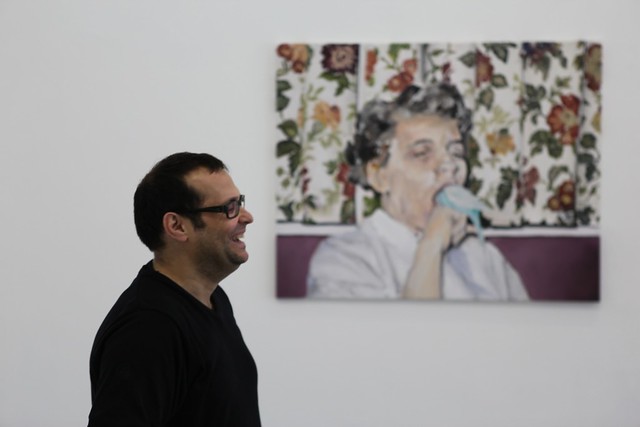
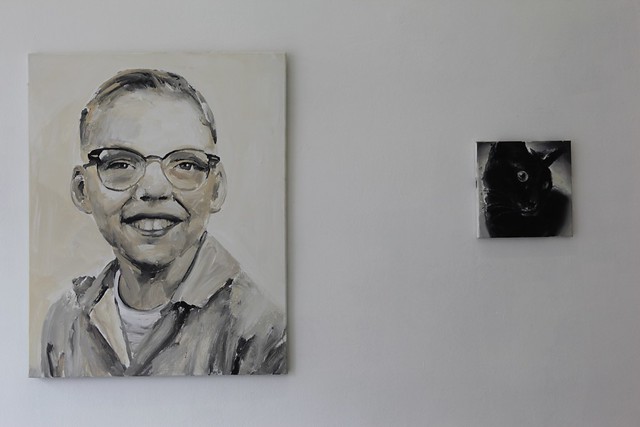


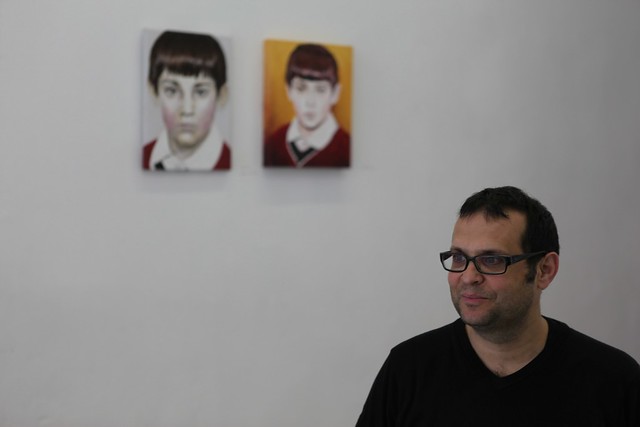



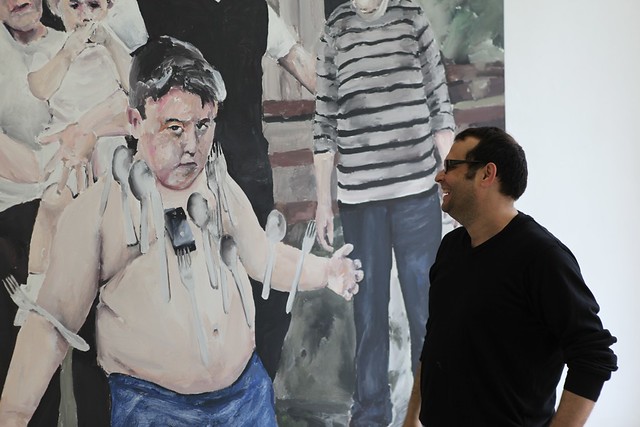
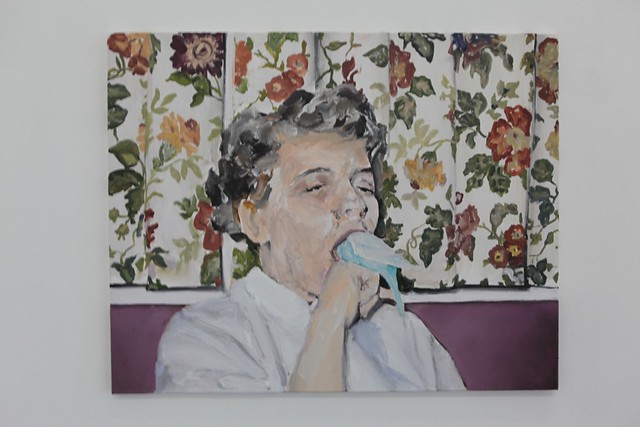





photos by artfridge // Courtesy Invaliden1 and Santiago Ydanez
Anna-Lena Werner: What is the concept of your current show “Gracias por Todo” at Invaliden1 in Berlin?
Santiago Ydanez: This exhibition is fun - it is different than most of my other shows. Some of my friends gave me photos that I used for the paintings in this show. But it is just the first part - in the second part there will be curator involved.
Anna-Lena: Who are these people? Do you know their stories?
Santiago: I don’t know where all of the photos came from. But the big painting, for example, is based on a photo that Sergio Belinchon, another artist in this gallery, gave me. I shows a magnetic boy from Croatia and his family. The magnet family. They somehow remind me of the characters in the movie “The Chainsaw Massacre”. I think the painting is quite tragic and serious, but the background is really comical.
Anna-Lena: What about the painting with the girl. Why does she have a bird in her mouth?
Santiago: Maybe she eats it, but maybe it is just a kiss. This work is the closest to my regular paintings, because I have frequently mixed the images of animals and human beings. I got this picture from a friend of my childhood.
Anna-Lena: Who gave you the picture with the cat?
Santiago: Noe Sendas did. It is his cat. He is an artist in this gallery, too.
Anna-Lena: And who are the two little boys with the fringe?
Santiago: This is me when I was six years old. The left painting is by a Korean friend of mine and the right one is my version.
Anna-Lena: This exhibition is very colourful and bright, whereas most of your other works are rather based on earth tones and black and white...
Santiago: ...When the colour is interesting and important to me then I use oil colours, in order to highlight that and because it gives me more time to work on transitions. My other works are all made of acrylic, which dries much faster.
Anna-Lena: Are you a fast painter?
Santiago: Yes, on one big canvas I paint maybe two to three hours. But it takes me a long time to figure out the image.
Anna-Lena: The canvases’ size and also the brushstrokes seem to have shrunk in this show, compared to your usual works.
Santiago: In most of the works my technique is still the same, but in the painting with the bird’s wing, for instance, I worked a lot with small details. However, after a while I couldn’t stand it anymore and just continued with thicker brushstrokes again. The thing is that I usually get really nervous and annoyed when painting details. (laughs)
Anna-Lena: Is that the reason why you usually work with extremely large-scaled canvases?
Santiago: I paint large because the process of painting is expressive for me. My movements’ and my body’s relationship with a big canvas is just different. The energy is important to me. Once I painted on an eight times twelve meter canvas. I spend two days preparing it and doing the drawings, but the actual painting process only took me one hour.
Anna-Lena: Your paintings are very expressive, too. Besides those works shown in this exhibition, they are often archaic, tragic and dramatic. Is the world a cruel and brutal place to you?
Santiago: I think the ambiguity is interesting. Expressions, such as a smiling could give a hint to happiness, but it could also emerge out of madness. I mean, I have been reading and been inspired by several existentialist writers. I really enjoy reading Thomas Bernhard, for example. He writes extremely dramatic, but I find his texts humorous, too. I think, it is impossible to be dramatic without a little humor involved. (laughs)
Anna-Lena: Do you think that the humorous aspects in your work are underestimated?
Santiago: Yes, possibly. But the magnetic boy is undeniably funny. (laughs)
Anna-Lena: You also seem to be inspired by many art historian references, such as from the renaissance period.
Santiago: Yes. Hans Holbein or Diego Velazquez, for example, painted many portraits, but those faces are universal. Impersonal. That is inspiring to me and for my understanding of portraits and self-portraits.
Anna-Lena: Do you enjoy painting?
Santiago: Very much, it is like hypnosis. About ten years ago I had an incredible tooth-pain, but I had to finish a work. Once I started painting the pain was completely gone. In the second I finished the work, the pain came back with the same intensity as before. It must be something about the concentration.
Anna-Lena: Do you have one favourite piece? A painting that is very special to you?
Santiago: I have many (he looks through one of his catalogues and then points at one of his untitled self-portraits from 1998) - this one is important to me, I think that was the first big face that I painted.
Anna-Lena: Why don’t you title your work?
Santiago: It’s difficult and too manipulating. I like to keep it open. But sometimes I find a funny word and then I use it. For example, I titled one of the big faces ‘Cabidela’, which is a traditional rice and chicken dish from Portugal.
Anna-Lena: What is your next project?
Santiago: I have a show in Mexico opening in two days. This exhibition will be very sweet and beautiful - the title is “Soft’. It includes many pictures of animals - dogs, cats, horses - on big canvases.
Anna-Lena: Why is it so fascinating for you to paint animals?
Santiago: I grew up in a very small town with 2000 people, in the province of Jaen in Andalucia in Spain. I was always surrounded by animals - we lived close to a natural park and I just hated that everyone was hunting. My father once shot a rabbit and my mother cooked it. I remember that she took off the skin, aggressively taking the animal apart, while talking sweetly about her nieces. That was harsh.
Anna-Lena: Did you ever have a plan b, in case you wouldn’t become an artist?
Santiago: Actually, my first choice was to become a paleontologist.
Anna-Lena: Was that because of Jurassic Park?
Santiago: Maybe.
Interview, 21.03.2012: Anna-Lena Werner
Gracias por todo
until the 31st of March 2012
Invaliden1 Galerie
Brunnenstraße 22
10119 Berlin, Germany
www.santiagoydanez.com
